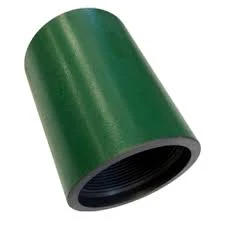- Afrikaans
- Albanian
- Amharic
- Arabic
- Armenian
- Azerbaijani
- Basque
- Belarusian
- Bengali
- Bosnian
- Bulgarian
- Catalan
- Cebuano
- Corsican
- Croatian
- Czech
- Danish
- Dutch
- English
- Esperanto
- Estonian
- Finnish
- French
- Frisian
- Galician
- Georgian
- German
- Greek
- Gujarati
- Haitian Creole
- hausa
- hawaiian
- Hebrew
- Hindi
- Miao
- Hungarian
- Icelandic
- igbo
- Indonesian
- irish
- Italian
- Japanese
- Javanese
- Kannada
- kazakh
- Khmer
- Rwandese
- Korean
- Kurdish
- Kyrgyz
- Lao
- Latin
- Latvian
- Lithuanian
- Luxembourgish
- Macedonian
- Malgashi
- Malay
- Malayalam
- Maltese
- Maori
- Marathi
- Mongolian
- Myanmar
- Nepali
- Norwegian
- Norwegian
- Occitan
- Pashto
- Persian
- Polish
- Portuguese
- Punjabi
- Romanian
- Russian
- Samoan
- Scottish Gaelic
- Serbian
- Sesotho
- Shona
- Sindhi
- Sinhala
- Slovak
- Slovenian
- Somali
- Spanish
- Sundanese
- Swahili
- Swedish
- Tagalog
- Tajik
- Tamil
- Tatar
- Telugu
- Thai
- Turkish
- Turkmen
- Ukrainian
- Urdu
- Uighur
- Uzbek
- Vietnamese
- Welsh
- Bantu
- Yiddish
- Yoruba
- Zulu
Understanding Casing and Tubing Connection Methods in Oil and Gas Operations
Casing and tubing connections play a critical role in the oil and gas industry, serving as the backbone for drilling operations and ensuring the safe extraction of hydrocarbons. These connections are essential components that provide structural integrity, pressure control, and facilitate the flow of oil and gas from underground reservoirs to the surface.
Casing is the large-diameter pipe that is installed in the drilled hole, providing support to the wellbore and preventing collapse. It also isolates the production zone from surrounding rock formations to avoid contamination of freshwater aquifers and to control the pressure exerted by the hydrocarbons. Tubing, on the other hand, is a smaller pipe that runs down the center of the casing and allows the extracted oil and gas to flow to the surface.
The connections between casing and tubing segments are particularly significant, as they must withstand extreme pressures and corrosive conditions. These connections generally involve specialized threading techniques, which ensure a secure and leak-proof seal. Proper installation and maintenance of these connections are vital to prevent failures that could lead to costly downtime or environmental hazards.
There are various types of casing and tubing connections, each designed for specific applications and operating conditions. Common connection types include threaded connections, welded connections, and premium connections, which offer enhanced performance features. Threaded connections are widely used due to their ease of assembly and disassembly, while premium connections provide superior sealing capabilities and resistance to high pressures and temperatures.
casing and tubing connections

The selection of appropriate casing and tubing connections depends on multiple factors, including well depth, geology, and the nature of the hydrocarbons being extracted. Engineers must carefully evaluate these parameters to choose the right materials and connection designs to optimize well performance. Additionally, advancements in technology have led to the development of new materials and designs that improve the reliability and efficiency of these connections.
Moreover, the quality of casing and tubing connections has a significant impact on the overall success of drilling operations. Poor connection integrity can result in leaks or blowouts, endangering both personnel and the environment. Therefore, regular inspections, maintenance, and adherence to industry standards are imperative to ensure the longevity and functionality of these connections.
In conclusion, casing and tubing connections are fundamental elements in the oil and gas sector. Their significant role in maintaining well integrity, controlling pressures, and facilitating fluid flow cannot be overstated. As the industry evolves, innovations in materials and connection technologies will continue to enhance operational efficiency and safety, ensuring sustainable resource extraction for future generations.
-
Tubing Pup Joints: Essential Components for Oil and Gas OperationsNewsJul.10,2025
-
Pup Joints: Essential Components for Reliable Drilling OperationsNewsJul.10,2025
-
Pipe Couplings: Connecting Your World EfficientlyNewsJul.10,2025
-
Mastering Oilfield Operations with Quality Tubing and CasingNewsJul.10,2025
-
High-Quality Casing Couplings for Every NeedNewsJul.10,2025
-
Boost Your Drilling Efficiency with Premium Crossover Tools & Seating NipplesNewsJul.10,2025







